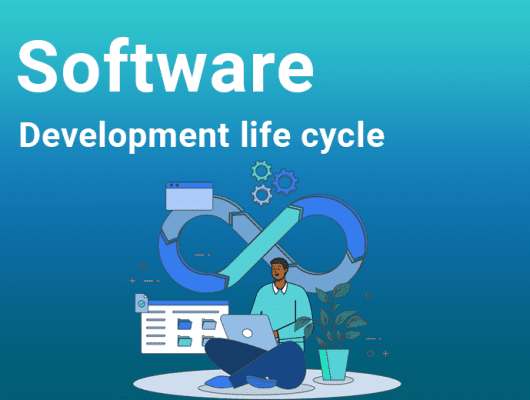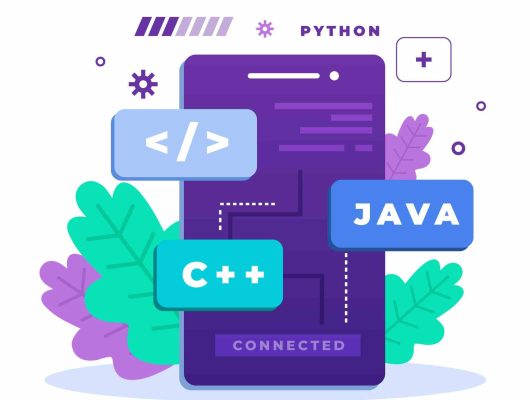
Mobile App Development Fundamentals( Comprehensive Guide)
Mobile application development has become an essential part of today’s digital era. As a result, this domain gives rise to several relevant inquiries.
What criteria do development teams follow when selecting the optimal platform and tools? What are the most important factors when designing engaging user interfaces? How do developers safeguard user information?
These inquiries underscore the complexity of the app development process. However, if you are searching for an answer to these queries, you are on the right page.
This guide covers the fundamentals of mobile application development. So, stay connected to us till the end of this article and get answers to all of your questions.
Let’s begin.
Table of Contents
A. Mobile App Development Fundamentals For Beginners

Here are some basic application development principles to better serve your consumers and improve their experience on your platform.
1. Generate Idea
You need to develop a list of potential ideas before you can begin developing mobile apps. So, create a list of practical steps based on your concept.
- To begin, here are a few good questions to ask:
- What are you hoping to achieve with this mobile app?
- What is your vision behind the app development?
- Highlight the issue(s) that your software will address for users.
- What will your application specifically provide?
- In what amount are you ready to invest?
- How do you plan to construct the application?
This list of questions helps you determine which idea is beneficial while creating the app.
2. Market Research
Another essential step in mobile app development is market research which provides you the clarity of the market. Therefore, ask the following questions
- How do you proceed regarding competing?
- Who are you specifically aiming to communicate?
- To differentiate yourself from the competition, how do you plan to do it?
- Which platform should you use for releasing your software?
- You should not cut corners or hurry through the market research process.
This will help you to save a ton of time and resources.
3. Know Your Target Audience
The ownership of a great program is meaningless if no one uses it. Therefore, recognizing who your audience is essential.
Before you begin application development, become your research to identify your audiences. Because customer satisfaction is vital if you desire success for your application.
4. Master the Programming Language
A person facing a grammatical challenge needs help communicating effectively in English. This idea also works for the languages that software developers use to create mobile apps.
So, the programmers must have a basic understanding of languages used in mobile app development. If you lack this knowledge, hiring a reputable developer or company is better to save time and resources.
5. Choose Right Platforms

Choosing the right platform is a crucial part of application development for better user experience. A variety of platforms exist for software development, including the following:
- Android
- iOS
- Cross Platform app
Each of these platforms has its own pros and cons. Before choosing any platform, it is better to research and find the most suitable one.
| Types of Platforms | Pros | Cons |
| iOS | Provide a high level of security Top-Notch performance Generate maximum revenue Smooth application operations | Delay in app launch due to review process Fewer personalization choices |
| Android | Open-source nature Custom features Seamless app approval Wide range of accessibility | Fragmentation Problem Bring less revenue in comparison to iOS |
| Cross-Platform | Work on both Android and iOS Less cost of development Streamline user experience | Lack of each platform’s distinctive capabilities Poor Performance |
6. App Designing and Development
A critical step in developing a mobile app is its design. To begin visualizing the app’s functionality, sketch some ideas and make wireframes.
- Prioritize the user experience
- Decide on a strategy for development.
- Get a group of experienced iOS or Android developers.
- Lay out a plan with checkpoints and objectives.
Moreover, making several MVPs using your wireframes, helps you understand your app’s proper working and design.
Apart from it, a well-designed application relies heavily on its user interface and user experience.
Potential customers are more likely to download an app with an intuitive UI. Therefore, Verify that your application operates swiftly and without difficulty.
7. Testing
After developing your app, it is essential to go for app testing before launching it.
During app testing, you can identify and fix any issues that can affect the user interface.
Quality assurance (QA) testers should test your software during development. You can also release updated versions of your program at a later time. However, you risk never releasing your app to the public if you spend too much time during testing trying to make it flawless.
8. Security
Security must be a top priority when planning the foundations of your company’s mobile app development.
Many people store login credentials, bank information, and credit card numbers on their phones. So, the security of their data would be the first concern of any user.
Therefore, remember to incorporate the security feature during the design phase or while developing your mobile app.
Remember, the more security the app provides, the more it will engage the user.
9. Deployment and Agility
In addition to offering a great mobile app experience, deployment convenience is crucial. Therefore, you need to be more agile and adaptable regarding support and enhancements.
This will help the development team launch the app quickly while spending less time fixing app issues.
10. Type of Mobile Apps
Another factor that is necessary to keep in mind is the type of mobile app you aim for. Apps come in four varieties. Such as
- Native Mobile Apps
- Hybrid Mobile Apps
- Cross-Platform Mobile Application
- Progressive Web Application
Understanding these types of apps will help you understand the essential code for your app.
For instance, the development of an Android application that operates on the google play store requires a single code.
However, you need two codes if you want to ensure its functionality on the iOS platform.
Here is a brief overview of the type
| Type of the Mobile Applications | Pros | Cons |
| Native App | You can install these apps directly on your mobile, either from the Google Play Store or the Apple App Store. In most cases, this app can run without the need for internet | Expensive to develop Time-consuming development phase Non-user-friendly development tools Demand frequent updates. |
| Cross Platform app | Using a single code, you can run this app on different platforms You can install this app natively on iOS and Android Most Affordable app Consume less time Easy maintenance Effectively reach a wider audience | Face security issues Long wait time to deploy new features or updates Need debugging frequently |
| Hybrid App | These apps are similar to cross-platform apps, but they work differently. Using a single code, you allow this app installation on different platforms, e.g., iOS and Android More user-friendly than the platform app Less technical | Do not work correctly on older devices Limited nature |
| Progressive Web app | Less costly to develop Easy to maintain than a native app Due to its cross-platform nature, users can use it everywhere Enhance user experience | Users cannot download it from the app store because it’s a web application Fewer functions Limited Bluetooth and NFC while working within the app. |
11. Languages Use in Mobile App Development
When developing a mobile application, knowing its languages is paramount. Because with it, you will create the app you aim for. Some of the popular languages for mobile application development are
- Java
- Swift
- Kotlin
- React Native
- Flutter
- Java
- HTML5 and CSS3
However, before choosing any language for your app, consider the following factors.
- Knowledge for your team for particular languages
- Project essentials
- Scaling demand
12. Mobile App Development Framework
Frameworks act as the building block in software development. Therefore, before you set off to build your app.
It is necessary to pick a suitable framework because it provides a systematic way to build an app. Here is the list of common frameworks used in mobile application development
- Spring boot
- Laravel ( PHP)
- ASP.NET(C#)
- NestJS
- Ruby on Rails
- Flask
- Angular
- React (Javascript)
- JavaScript framework Vue.js
13. Essential App Components
Components of the software are important for any mobile application. Nevertheless, each of the components is distinct from one another.
However, some of them show their dependence on others. Here are the 5 components of the app that make your application real.
a. Activities
The basic component in application development provides the most streamlined user interface. It works as an entry point for the users.
For Instance
An email app may include multiple activities:
- One for viewing a list of new messages
- Another for writing an email
- One for reading them.
Although each activity is different, they support one interface, i.e., emailing.
Here are the key features that the activities perform
- Keep track of hosting activities
- Giving higher priority to the activities that users already utilize.
- Allow the system to coordinate with the user flow.
b. Services
A service is a versatile tool for ensuring an app runs in the background, catering to various needs.
This component operates in the background, carrying out tasks that require a significant amount of time. This service does not come with a user interface.
Two service types help the system to manage the app. These services include
- Started Services
- Bound Services
c. Broadcast Receivers
This part is responsible for handling system-wide announcements. Even though they don’t have an interface, most broadcast receivers are system-generated.
They can notify the user through the status bar when a broadcast event happens. It typically performs less work and acts as a doorway to the other parts.
d. Content Providers
This component manages a shared collection of app data. This component allows users to access, query, and edit file systems, web, and SQLite databases.
Moreover, this component is helpful, especially when users need to write or read private, non-shared data.
Bottom Line
Mobile app development is more related to using the right tools, concepts, and teams rather than technology. Therefore, apart from following these steps, there is a need for experts as well.
Develop, design, test, and secure your app with Onyxtec. Where a team of experts turns your app idea into a reality within your budget. So, what are you waiting for?
Contact us to take your online permanence to the next level.
FAQ
i. What are the basic steps in mobile application development?
- Build a team
- Conduct market research
- Highlight essential app features
- Design MVP
- Plan application security
- Developing
- Testing
- Deployment
ii. Can I run the code on mobile?
Ruby, Node, Python, C/C++, and JavaScript can run the code on Android smartphones.
iii. Is it possible to use VS code on mobile?
No, because it is the web-based code that works online.
iv. Which platform can I use for app development?
Multiple platforms facilitate application development, such as Flutter, Apple Xcode, Android Studio, Appzillon, Progress Kinvey, etc.




